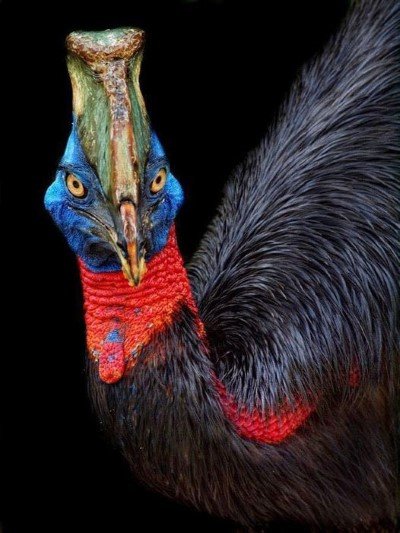The Single Dad
Bird of the Day Series, Social Media Content
This is the Northern Cassowary, a cousin of the Emu found exclusively in the swamps and forests of Papua New Guinea. They’re 6’ tall, 5’ long and weigh 80 to 130 lbs. What you see is their only colour—the rest of them is a mass of hard, stiff, black feathers. They don’t fly, but they run at 40 mph, swim like Olympians and effortlessly jump to 7-8 feet. They can live for as long as 60 years.
If you leave them alone, they’ll leave you alone. But if you surprise one, you’ll be met with a slicing dagger claw or a swift kick that will break your leg. The last known death of a human was in 1926, when someone took a claw to the neck.
Luckily for these birds, they make terrible pets. They eat constantly and defecate constantly. To communicate, they grunt, hiss and use a low-frequency ‘boom’. In the absence of parents, young cassowaries imprint on humans, form strong emotional attachments and demand to be nestled. And you don’t want one of these guys crawling into your lap.
Their constant defecation makes them crucial to the health and regeneration of forests—they eat fruit and berries, then drop seeds all day long. They also control rodent and lizard populations and eat anything dead.
Breeding is interesting. The female stands perfectly still while the male dances around her, then he scratches her rump until she allows mating. He leads her to a perfectly-prepared nest; she lays four eggs, and then takes off—females mate with up to five males each year and do nothing to nurture their young. The male incubates the chicks, then raises them for up to 18 months.
Predators of these birds are dogs, feral pigs and, of course, humans. The tribes of Papua New Guinea respect them, using traditional methods to kill them—arrows or clubs. Because you need considerable skill to kill one, bagging a Cassowary is a big deal. Natives hunt them for food, and use their bones and feathers for rituals and gifts. Very few adults are killed, mainly because they are so fast and well-camouflaged. But the young can’t run—up to about 12 months, if they try to run, they fall down. And, increasingly, non-native hunters are showing up with guns. Thanks to them, populations are decreasing, and they are now listed as vulnerable.
